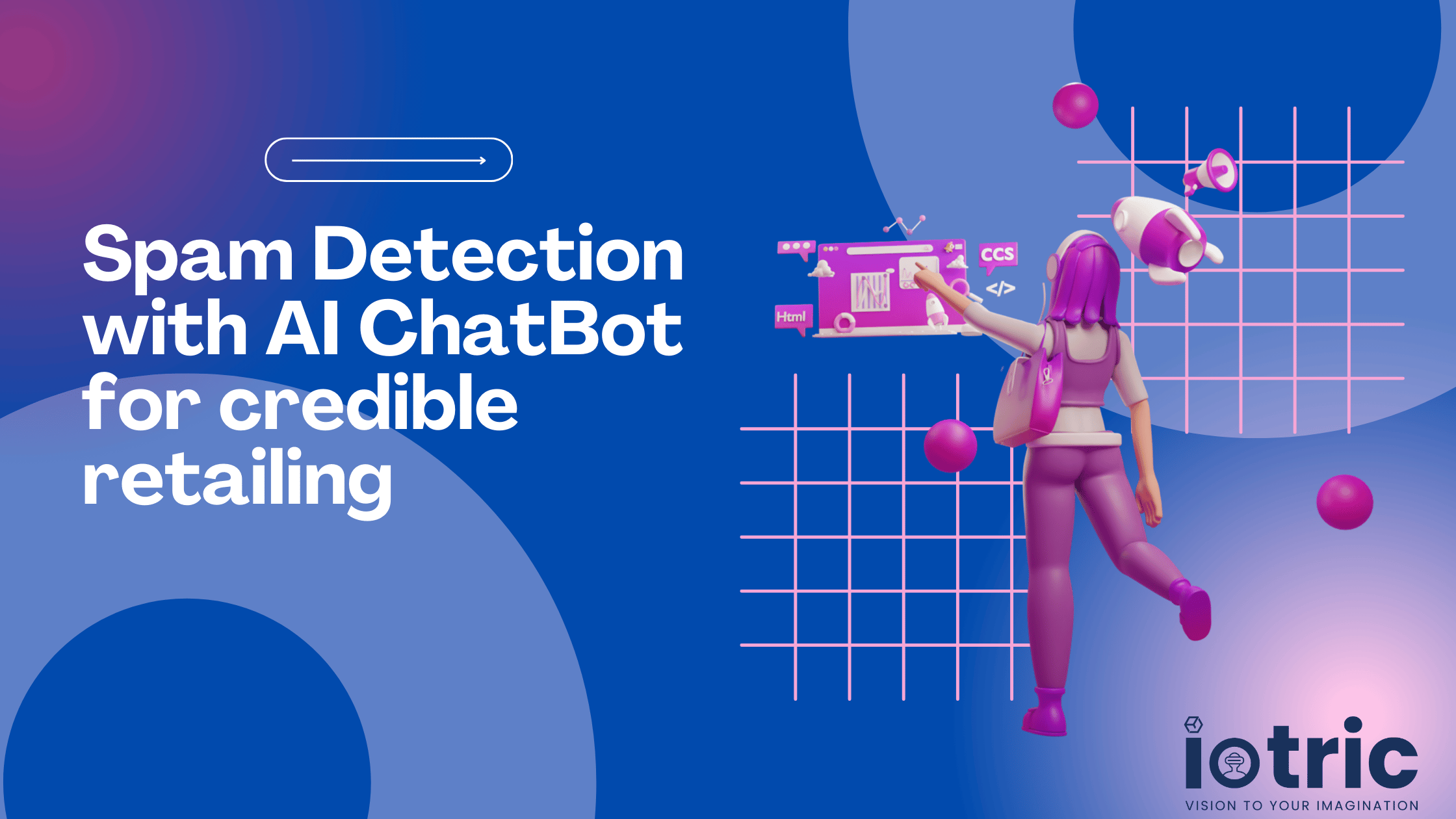Artificial IntelligenceGenerative AI
How AI Chatbots Are Improving Spam Detection in Retail?

In the age of digital transformation, chatbots have revolutionized customer service in the retail industry. They offer 24/7 support, quick responses, and scalable solutions for businesses to engage with customers.
However, as these chatbots become more integral to the customer experience, they are increasingly targeted by spammers, leading to disruptions in service, wasted resources, and poor user experiences. Therefore, spam detection in retail chatbots is essential to ensure smooth, secure, and efficient operations.
This article will explain spam detection in practice and how the retail industry can utilize it to optimize costs, time, and efforts.
What is Spam Detection?
Spam detection in a retail chatbot involves identifying and filtering out irrelevant or malicious messages that can disrupt customer interactions or affect the chatbot’s performance. The process typically uses machine learning and natural language processing (NLP) techniques to classify messages as either spam or non-spam.
What Is an AI Chatbot in Retail?
A retail chatbot or an AI chatbot in retail is designed to interact with customers in real time, providing assistance and support through text-based or voice-based conversations. Retailers deploy these chatbots on their websites, mobile apps, or messaging platforms to enhance customer service, streamline shopping experiences, and automate routine tasks.
Furthermore, Retail Chatbot can significantly improve customer service in the retail sector by offering fast, efficient, and personalized interactions. To boost the customer service, it ensures
- 24/7 availability to support customers regardless of their time zones
- Acceptance or Rejection of orders based on chat
- Saving HR costs by generating automated responses
- Personalized customer experience and engagement
- Instant response to customer queries
- Collection of valuable customer data for better products and services

Enhancing Retail AI Chatbots with Spam Detection Integration
As customer data is highly valuable to companies for evaluating their business performance and customer relation management, the credibility and legitimacy of data collected from chatbots are also vital. For which the spam detection algorithm needs to be integrated with the retail chatbot.
For instance, a spammer may intentionally place an order through the chatbot and later refuse to accept it or provide an invalid location, resulting in a failed delivery.
If the chatbot doesn’t have any spam detection mechanism, then such unwanted orders will be placed, which will lead to a waste of time, cost, and effort by the retailer and delivery agent.
To prevent unwanted and wrong orders or queries, the spam detection mechanism should be deployed along with the retail chatbot. It might help the retailer detect spammers based on their query, location, identity, etc.
Business Benefits of Integrating Spam Detection in AI Chatbots
Implementing spam detection in retail chatbots can have a profound impact on business operations and customer relationships. By effectively filtering out spam, retailers can create a more positive and trustworthy shopping experience for their customers. This proactive approach not only enhances customer satisfaction but also strengthens the foundation for long-term success. Here are some key benefits of integrating spam detection:
- Reduction in Fraudulent Transactions
- Credible Customer Base
- Higher Customer Retention
- Personalized Business Services
- Lower Rate of Business Loss
- Higher Business Growth
Role of ML, DL, and NLP in Spam Detection with AI chatbot
Machine Learning provides a range of extensive classifiers, such as Random Forests, Naïve Bayes, and Support Vector Machines, to recognize spam based on message patterns and user behavior. It helps to build and deploy models to analyze the content of messages and make informed decisions on whether they should be classified as spam. These models can be trained on historical data consisting of both spam and legitimate messages, allowing the chatbot to detect nuanced spam attempts in real time.
In contrast to Machine Learning, Deep Learning provides models with advanced spam detection capabilities. Models such as RNNs and LSTMs are useful for processing sequences, allowing them to capture the flow of conversation and detect spam based on context. They can also identify suspicious behavior, such as recurrent messages or out-of-context content.
Furthermore, BERT (Bidirectional Encoder Representations from Transformers) is a pre-trained NLP model that understands the semantic meaning of text. It is highly effective for detecting spam in complex and nuanced messages. It can capture word context and relationships to identify vague cues in text that might indicate spam.
Summary
In summary, retail chatbots are:
- A powerful tool for automating customer service.
- Providing personalized experiences.
- Improving operational efficiency in the retail sector.
However, spammers may threaten the intended benefits of retail chatbots, which can be prevented through technological advancements such as Machine Learning, Deep Learning, and Natural Language Processing.